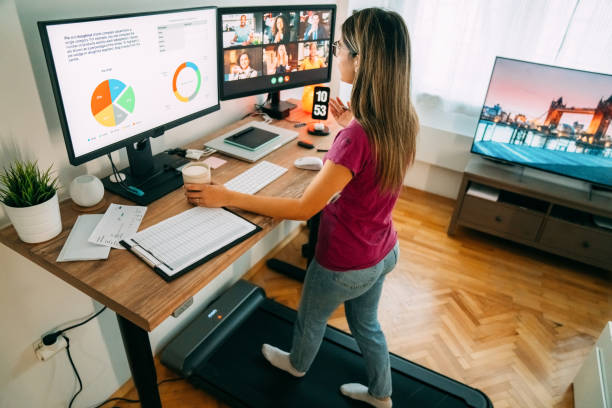Your cart is currently empty!
Category: 🧘 Complete Whole-Body Wellness
-
🌿 How to Calm the Voices in Your Head: Easing Stress & Overthinking Naturally

At Explore Your Health Haven, we believe in finding balance and healing by returning to nature, quiet moments, and intentional living. If your mind feels busy and overwhelmed, you’re not alone. With just a few gentle shifts, you can quiet the noise, come back to your breath, and feel grounded again.
🧘♀️ 1. Breathe Yourself Back to Center

Breathwork is a simple, powerful way to shift from chaos to calm in under a minute. When your mind races, your breath often becomes shallow—sending signals to your nervous system to stay in “fight or flight.”
Try this grounding technique:
- Inhale deeply through your nose for 4 seconds
- Hold your breath for 4 seconds
- Exhale slowly through your mouth for 6–8 seconds
- Repeat 4–6 times
You’ll feel the difference almost immediately. Add in calming music, a few drops of lavender or frankincense essential oil, or step outside if you can to enhance the effect.
🛋️ 2. Create Your Calm Space

Your environment has a huge impact on your nervous system. By creating a small “sanctuary” at home, you give yourself a physical space that signals rest, not stress.
Here are a few ideas to make a peaceful zone:
- Soft, earthy colors (greens, creams, and browns)
- Cozy throw blankets or cushions
- Natural textures like wood, stone, or plants
- An essential oil diffuser or beeswax candle
- A favorite mug with warm herbal tea
This space becomes your reset button when the noise in your head starts to rise.
📓 3. Journal It Out

Writing things down helps clear space in your head. Sometimes, the thoughts that feel too loud or heavy just need a place to land.
Try these journaling practices:
- Brain Dump: Write freely for 5–10 minutes without editing. Just get it all out.
- Gratitude Journaling: List 3–5 things you’re thankful for each day to shift your perspective.
- Reflective Prompts: Try questions like:
- “What’s really bothering me beneath the surface?”
- “What’s one thing I can control right now?”
- “What would I say to a friend feeling this way?”
🌿 4. Use Nature as Your Anchor

Nature has a deeply healing effect on the mind. Whether you’re barefoot in the grass, sitting near a plant, or listening to a stream—just being present with the earth can slow the swirl of anxious thoughts.
Grounding ideas:
- Walk barefoot in your yard or a park
- Hold a stone, crystal, or shell and notice its texture
- Listen to natural sounds (rain, ocean, forest, birdsong)
- Watch clouds pass or leaves move in the wind
🧠 5. Label Your Thoughts

Not every thought is truth, and not every feeling requires action. One powerful tool is labeling your thoughts to gain emotional distance from them.
Instead of thinking:
“I’m overwhelmed, I’ll never get this done!”Try saying to yourself:
“That’s an anxious thought” or “That’s fear showing up again.”When you name it, you don’t become it.
It gives you space to respond with compassion and clarity.
💛 6. Speak to Yourself with Love

The loudest voice in your head is often your own. Let it become a gentle, supportive one.
Replace self-judgment with calm reassurance:
- “I don’t have to have all the answers today.”
- “It’s okay to pause.”
- “I’ve gotten through hard things before, and I can again.”
Write your favorite affirmations down, keep them on your mirror, or record them in your voice to play back during anxious moments.
🌸 Final Thoughts

Your thoughts don’t define you, and they don’t have to control your day. When you give yourself tools to slow down and reconnect—through breath, nature, journaling, and compassion—you return to your natural state: peace.
You deserve that.
Let these practices be gentle reminders that you already hold the power to come back to calm, again and again.
-
How to Stay Active While Working from Home

Introduction
Working from home is convenient, but it also comes with its own set of challenges. One of the most common problems people face is staying active throughout the day. Without the commute or physical movement around an office, it’s easy to fall into a sedentary routine. However, remaining active is crucial not just for your physical health, but also for your mental well-being. Regular movement can boost energy levels, improve focus, reduce stress, and keep you feeling refreshed
In this post, we’ll explore practical tips and creative ways to stay active while working from home, even if you have a busy schedule. Whether you’re in back-to-back meetings or tackling a long to-do list, you’ll find simple ways to integrate movement into your day. Let’s get moving!
1. Set Up a Standing Desk or Adjustable Workspace

Why it matters:
Sitting for long hours can lead to poor posture, back pain, and decreased circulation. By incorporating a standing desk setup, you can counteract these issues and promote better posture. Even if you don’t have an actual standing desk, it’s easy to create a standing workspace with a few adjustments.How to make it work:
- Elevate your workspace: Use a sturdy table or counter, or get a laptop stand to elevate your computer. If you’re using a desk, try a standing desk converter to easily switch between sitting and standing.
- Balance on a stability ball: Swap your office chair for a stability ball to engage your core while you work. This helps improve posture and prevents slouching.
- Use an anti-fatigue mat: If standing for long periods, an anti-fatigue mat can reduce strain on your feet and legs.
Tip: Try alternating between standing for 30 minutes and sitting for 30 minutes to keep your body moving throughout the day.
2. Take Regular Movement Breaks (Every Hour)

Why it matters:
Sitting for extended periods can cause stiffness, fatigue, and muscle tension. Taking small movement breaks every hour can help counter these effects, improve circulation, and keep you energized.How to make it work:
- Set an hourly reminder: Use your phone, computer, or an app to set a reminder to get up and move every 60 minutes.
- Use your break time for movement: Take a brisk walk around the house, do a quick stretch, or even a few laps around your yard to get your blood flowing.
- Try the Pomodoro Technique: Work in 25-minute bursts, followed by a 5-minute break. After 4 sessions, take a 15-20 minute break. During those 5-minute breaks, get up and do something physical.
Tip: If you’re in a meeting or call, try standing or walking around your home during the conversation. It’s an easy way to stay active without interrupting your work.
3. Desk Exercises and Stretching Routines

Why it matters:
If you don’t have time to leave your desk, you can still do a variety of exercises right from your chair. Desk exercises and stretches help improve flexibility, reduce muscle tension, and keep your body active.How to make it work:
- Neck and shoulder rolls: Roll your shoulders forward and backward to relieve tension in the upper body. Do this several times a day.
- Seated leg extensions: Sit tall in your chair and extend one leg straight, hold for a few seconds, and then lower it. Alternate between legs and do 10-12 reps on each side.
- Wrist and finger stretches: Stretch your wrists and fingers by opening and closing your hands, or gently stretch your fingers back to release tightness from typing.
- Seated Torso Twist: Sit tall in your chair and twist your torso to the right, then to the left, to release tightness in the spine and improve flexibility.
Tip: Set a timer every hour to remind yourself to do 3-5 minutes of stretching or a quick exercise to keep your body moving.
4. Incorporate Desk Yoga or Quick Stretch Routines

Why it matters:
Yoga helps improve posture, increase flexibility, and reduce stress—all important factors when working from home. Even just a few minutes of yoga during the day can make a big difference.How to make it work:
- Simple desk yoga poses: Try Seated Cat-Cow to stretch your back and neck, or Desk Downward Dog to lengthen your spine and stretch your legs.
- Stretching for the hips and legs: Do a quick seated forward fold or hip flexor stretch to release tightness from sitting.
- Breathing exercises: Incorporate deep breathing techniques during your yoga practice to calm your mind and reduce stress.
Tip: You don’t need a full yoga session—just 5-10 minutes of stretching and mindful breathing can refresh your body and mind.
5. Use Virtual Workouts During Breaks or Meetings

Why it matters:
If you’re on a video call or in between tasks, it’s the perfect opportunity to sneak in a workout or stretch. This can be a great way to get your body moving without sacrificing productivity.How to make it work:
- Walk or stretch during calls: Stand, walk around, or do light stretches while attending virtual meetings or conference calls.
- Follow a quick YouTube workout: During a lunch break or a longer break, put on a 10-15 minute YouTube workout, such as a quick cardio session, stretch, or yoga practice.
- Active minutes during breaks: Instead of scrolling through your phone or checking emails during breaks, use that time to do some quick bodyweight exercises (like squats, lunges, or jumping jacks) to get your heart rate up.
Tip: If you’re a fan of group activities, try joining a virtual workout class during your lunch break. Many platforms offer live or recorded sessions, from yoga to high-intensity interval training (HIIT).
6. Set Fitness Goals and Track Your Progress

Why it matters:
Setting specific, realistic fitness goals helps keep you motivated and focused on staying active. Tracking your progress will allow you to see the benefits and encourage you to continue.How to make it work:
- Set daily step goals: Aim for a specific number of steps each day (e.g., 8,000-10,000 steps). Track your steps using a fitness tracker or a smartphone app.
- Use fitness apps: There are numerous apps that can help you track your workouts, set goals, and remind you to move. Consider apps like Fitbit, Google Fit, or MyFitnessPal for easy tracking.
- Create a weekly activity schedule: Plan when you’ll fit in movement (e.g., 15 minutes of stretching after lunch, a 30-minute walk after work, etc.) to make sure activity is part of your daily routine.
Tip: Start small, and gradually increase your activity level. Celebrate small wins like hitting your daily step goal or completing a weekly workout challenge.
Conclusion
Staying active while working from home doesn’t have to be complicated. By integrating simple movement breaks, stretching routines, and desk exercises into your day, you can improve your overall health and productivity without leaving your workspace. Remember, every bit of movement adds up, and even small changes can have a big impact on your physical and mental well-being.
Start implementing one or two of these tips today, and see how they help you feel more energized, focused, and motivated throughout the day. Whether it’s stretching during a call, using a standing desk, or taking an active break every hour, keeping your body moving is an essential part of working from home healthily.
How do you stay active while working remotely? Share your favorite tips in the comments below!
